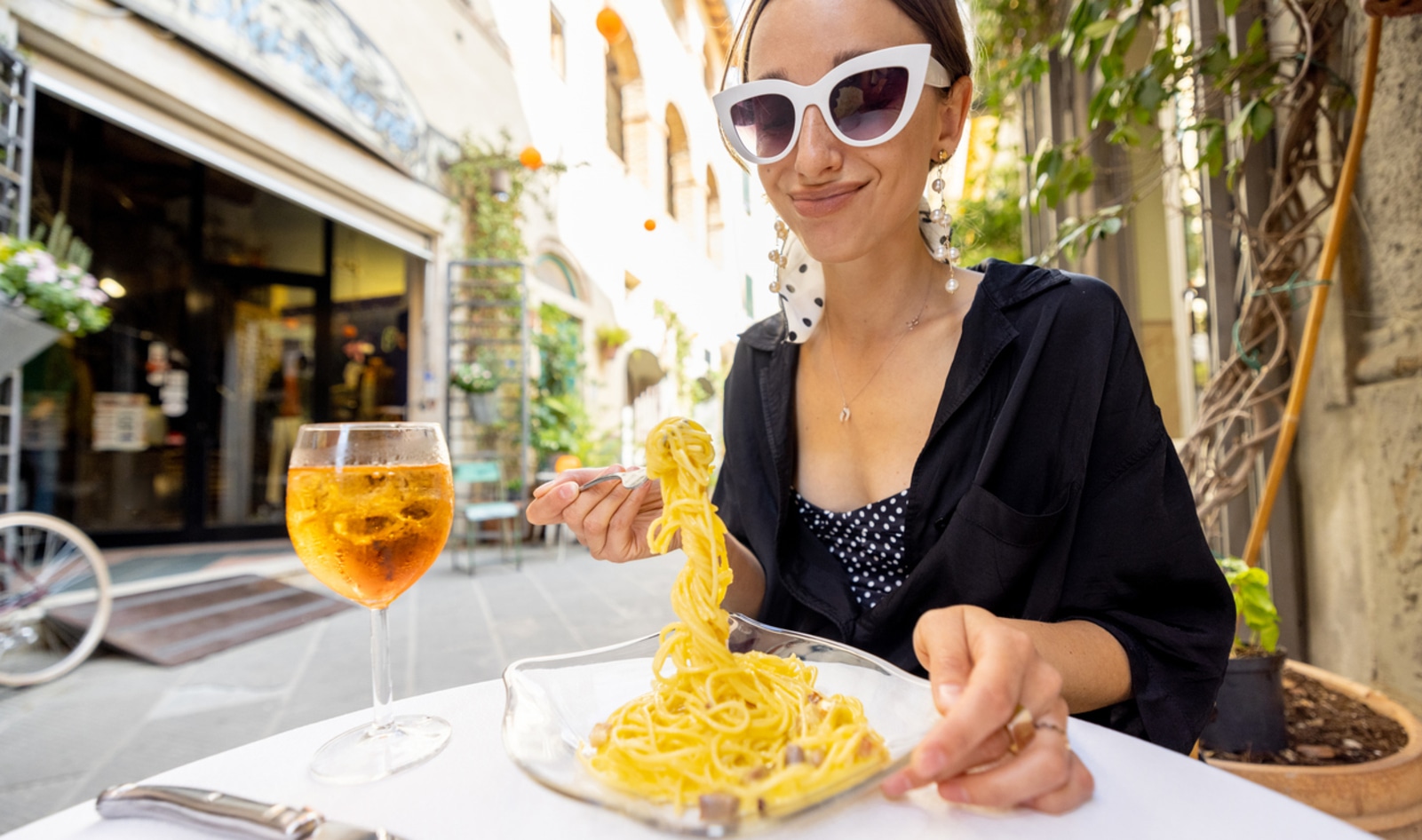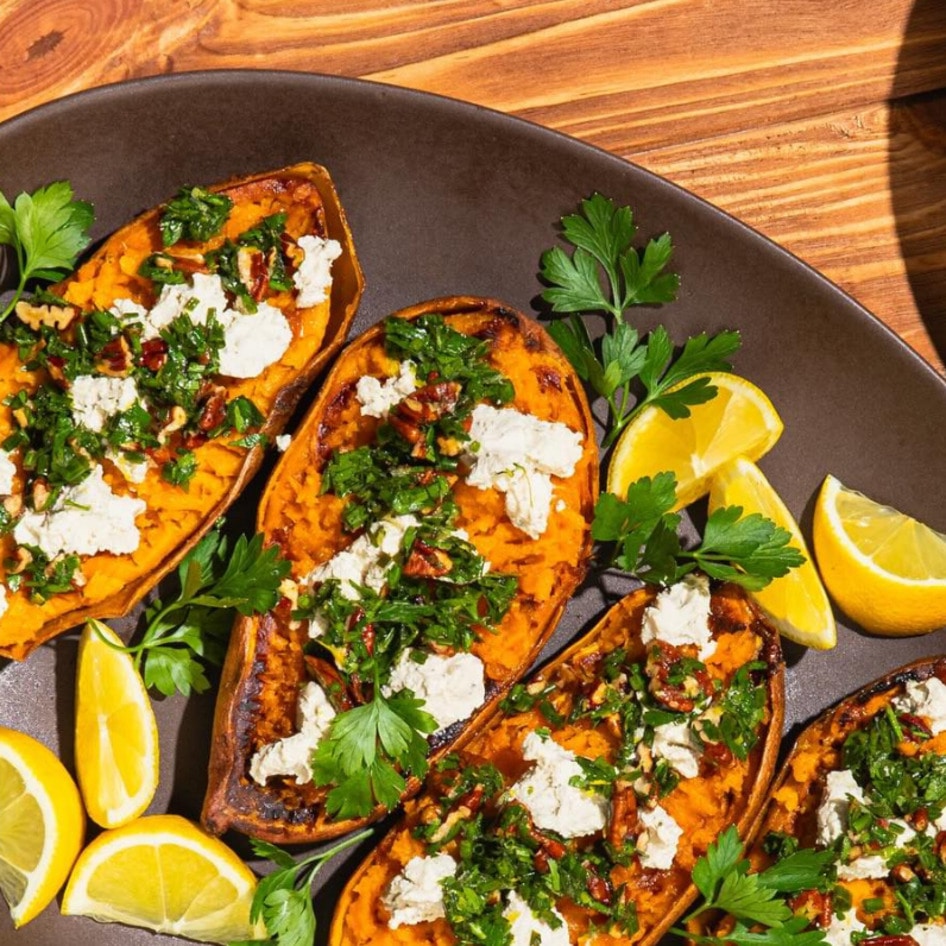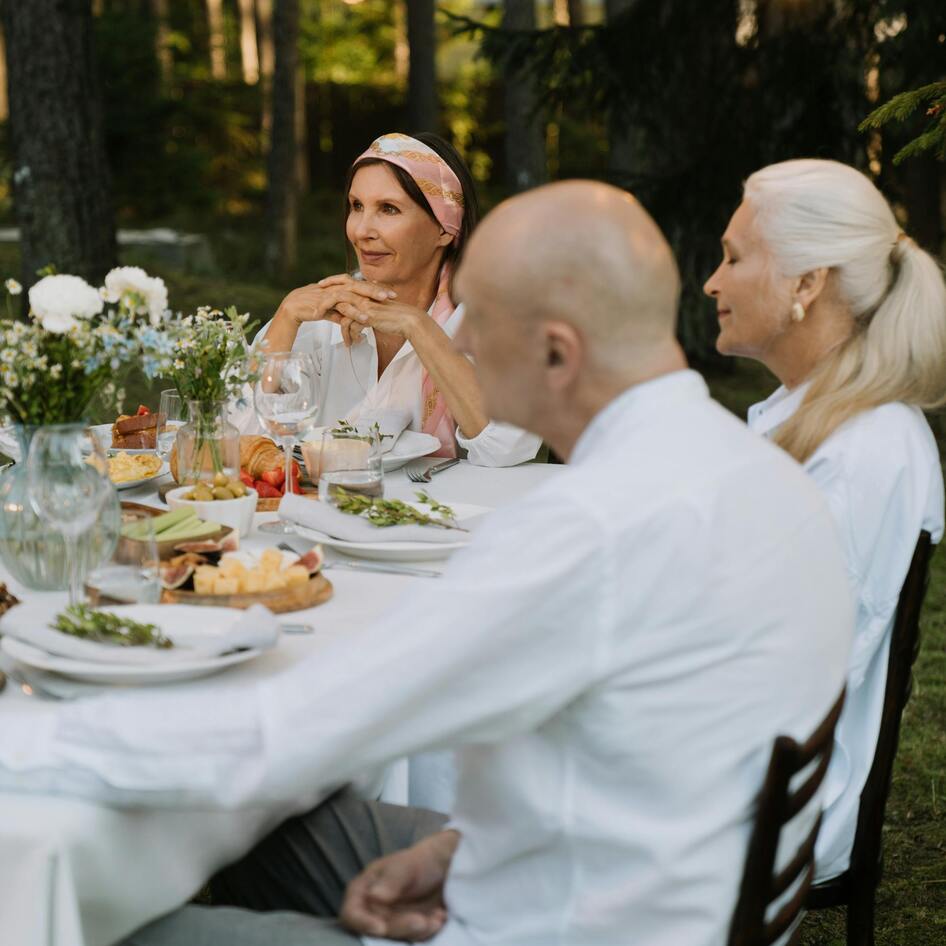For the modern diner, eating alone is no longer something to apologize for—it’s an act of self-possession, and in many cases, a luxury. More Americans are embracing this quiet ritual. Solo dining has risen more than 50 percent since 2003, with about one in four adults now eating every meal alone on certain days. Among those under 25, the shift is even more striking: an 80-percent increase over two decades. But beyond the numbers is something harder to quantify: the growing cultural comfort with solitude, and the unexpected pleasures of keeping one’s own company.

According to research from Gallup, people who regularly eat with others report higher overall satisfaction, and shared meals are considered strong indicators of well-being. Yet the idea that dining alone must be second-best is falling out of fashion. More often, it’s a conscious choice—one that can feel grounding, powerful, even indulgent.
Rewriting the rules of the table
In cities from Los Angeles to Tokyo, the solo diner has gone from curiosity to mainstay. OpenTable reports a 64-percent rise in solo reservations since 2019, and younger diners are leading the trend. Nearly half of millennials and Gen Z respondents say they eat out alone at least once a week. Their reasons vary: freedom from conversation, room to decompress, time to scroll without guilt. But underneath it all is a redefinition of what it means to enjoy a meal.
This is not the sad salad desk lunch; it’s a seat at the bar with a glass of wine and the house special. A booth at your favorite café where the waiter greets you by name. It’s choosing the perfect bite for yourself—and not offering to share. In some ways, it’s the purest version of eating well.
According to Supatra Tovar, PsyD, a clinical psychologist and registered dietitian, the rise of the wellness movement and the emphasis on mental health have “encouraged people to prioritize their own needs and experiences,” she told HuffPost. This includes dining alone—a sort of positive solitude.
The line between solitude and disconnection
Of course, not every solo meal is an act of liberation. For many, particularly older adults, eating alone is tied to loss—of a spouse, of routine, of community. Studies show that solitary dining among seniors often correlates with poorer nutrition, skipped meals, and increased depression.
 Canva
Canva
One study found that adults in their seventies who lived and ate alone consumed fewer vegetables and relied more heavily on packaged food. In the US, the Surgeon General has called attention to the health risks of loneliness, linking it to heart disease, cognitive decline, and a measurable rise in early mortality.
But even here, the answer isn’t necessarily a full table. It’s a mindful one. The distinction lies in agency. Did you choose to eat alone, or did loneliness choose you? Do you feel lighter when the meal ends or emptier? These questions are subtle but essential, and they determine whether solitude serves or isolates.
Designing a meal worth savoring
Restaurants are adapting, and in some places, celebrating the solo experience. In Japan, Ichiran ramen shops are famously designed for parties of one: diners sit in private booths with no interaction from servers, focusing entirely on the food. It’s not antisocial, it’s reverent.
In the US, more fine dining spaces now accommodate single patrons with intention. TouchBistro’s restaurant trends note the rise of one-top tables, menus designed for solo pacing, and staff trained to treat a solo diner as a welcome guest—not a table to be turned. The result? An experience that feels curated, not compromised.
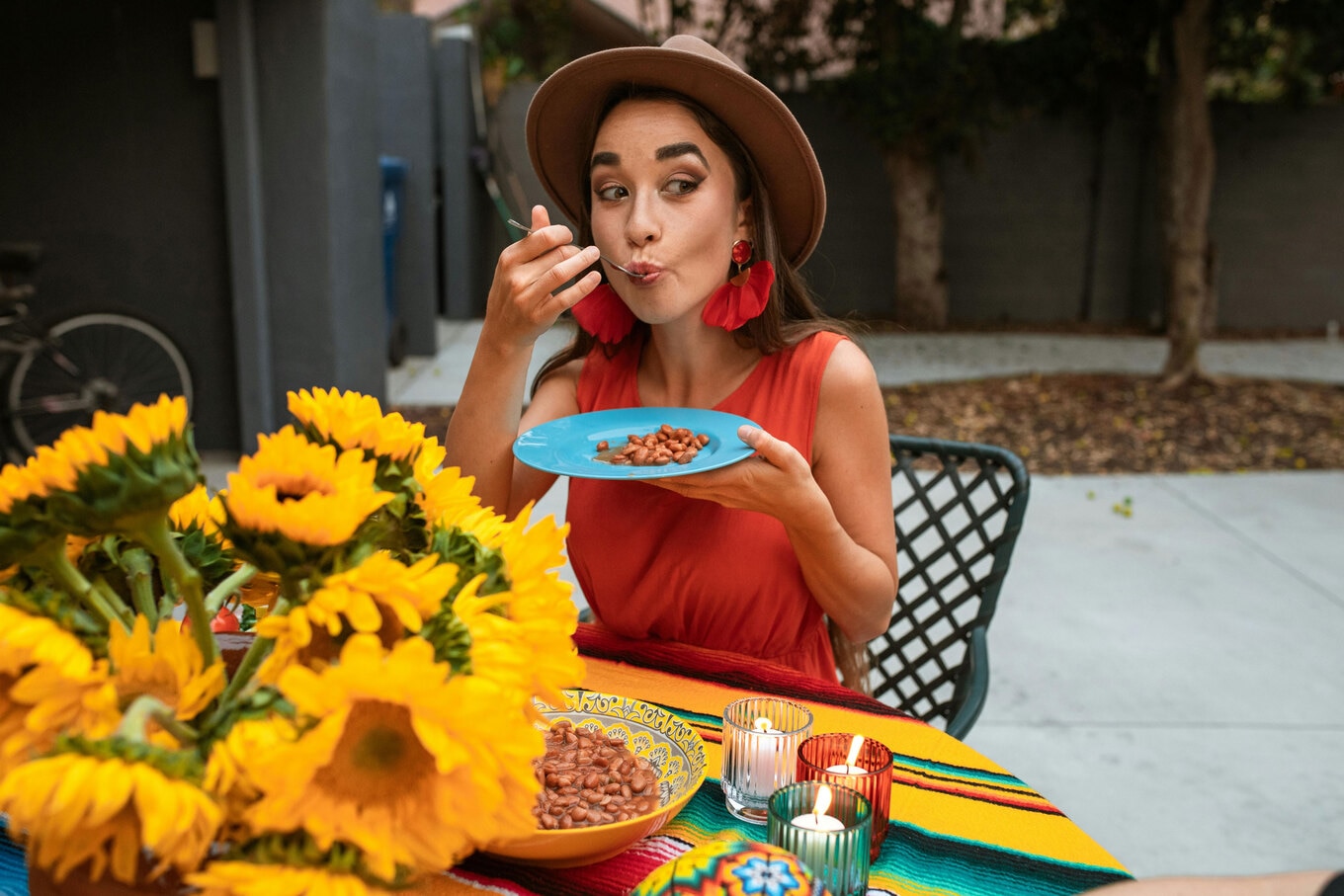 Pexels
Pexels
Writers like Emma Gannon have romanticized these moments: the slow hotel breakfast with a view, the chance to linger without small talk. “In my twenties, I used to nervously ask, with a tinge of embarrassment, for a table for one. I wanted to take up space, but didn’t quite feel it in my bones yet,” she wrote for Conde Nast Traveler. “I would eat nervously, distracting myself with a book and avoiding eye contact with anyone who might look pitying, and I would act sheepishly with the waiters. Now, at 36, I proudly ask for my table for one.”
At home, the same approach applies. Set the table, even if it’s just for you. Light the candle. Choose the plate that makes you feel something. This is not about pretending you’re not alone—it’s about not needing to.
What to cook when dining alone
It’s easy to throw something in the microwave or rely on meal kits. But you can also easily elevate the meal-for-one experience at home. Check out some ideas below.
Roasted Sweet Potato With Tahini and Pomegranate
Halve a sweet potato and roast until the edges caramelize. Drizzle with tahini, scatter pomegranate seeds, and finish with za’atar and flaked salt. Add a handful of arugula tossed in lemon juice for brightness.
Farro Salad With Castelvetrano Olives and Radicchio
Toss cooked farro with shaved radicchio, parsley, and chopped olives. Add a squeeze of lemon, a splash of olive oil, and crushed toasted hazelnuts for crunch. It’s bracing, elegant, and quietly complex.
Cacio e Pepe–Style Pasta
Boil pasta and reserve a splash of water. Stir in a spoonful of white miso, cracked pepper, and a dusting of nutritional yeast. Swirl until creamy and serve directly from the pan if you’re feeling rebellious.
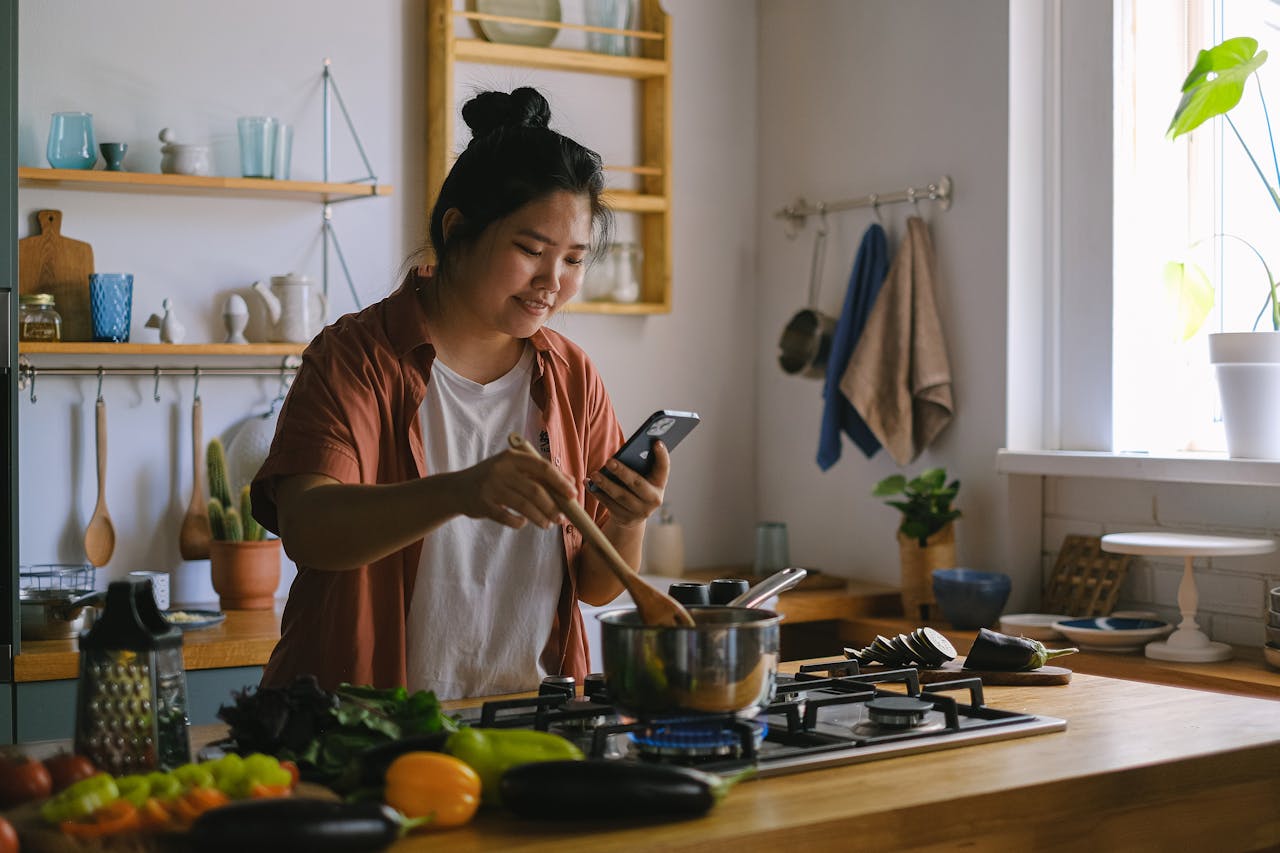 Pexels
Pexels
Miso Soup With Greens and Tofu
Heat dashi or water, dissolve in mellow miso, and add bok choy, cubed silken tofu, and scallions. Sip slowly. Add soba noodles if you need something grounding.
Toasted Sourdough With Avocado, Radish, and Chili Crisp
Smashed avocado on toast never really left. But here, add shaved radishes, a spoonful of chili crisp, and a drizzle of good olive oil. Sprinkle black sesame seeds if you have them.
BECOME A VEGNEWS VIP: Get exclusive product deals, freebies, and perks galore!
Chickpea Socca With Herbed Cashew Cream
Whisk chickpea flour with water, olive oil, and salt. Bake in a cast iron skillet until crisp-edged and golden. Serve with a swipe of cashew cream and herbs. Eat with your hands.
Carrot-Ginger Soup With Coconut Milk
Blend roasted carrots with fresh ginger, garlic, and coconut milk until smooth. Serve with a squeeze of lime and a handful of crispy shallots or croutons. It’s soup, but it’s dressed up.
 Canva
Canva
Warm Quinoa With Steamed Broccolini and Lemon-Tahini Dressing
A bowl of comfort: fluffy quinoa, lightly steamed broccolini, sliced avocado, and a spoonful of lemon-tahini dressing. Top with roasted chickpeas or pepitas for crunch.
Oven-Roasted Tomatoes With Garlic and Crusty Bread
Halve cherry tomatoes and roast with olive oil, slivered garlic, and thyme until jammy. Spoon onto toasted bread and eat warm, ideally with a glass of sparkling water and a novel.
Coconut Yogurt With Berries, Pistachio, and Maple Drizzle
Perfect for breakfast or dinner if you’re not feeling savory. Thick vegan yogurt topped with blackberries, crushed pistachios, and just enough maple syrup. Add orange zest if you’re feeling extra.
For more plant-based stories like this, read:
JUMP TO ... Latest News | Recipes | Guides | Health | Subscribe

